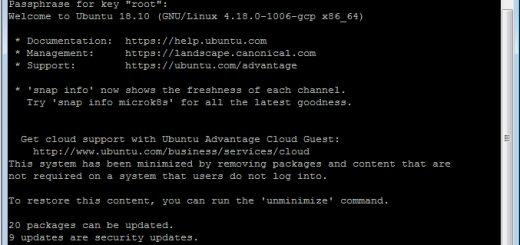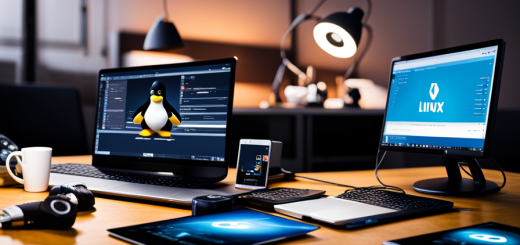Linux Download: Which Free and Paid Distros are Right for You?
Linux is a very popular operating system created by Linus Torvalds in 1991. Linux distributions have come a long way since then, and now there are literally hundreds of different versions of Linux available. They all run off a modified version of the Linux Kernel, so they look and feel very similar. Some use different commands, but on the whole, once you learn one version, you can transfer your skills onto any other version you need.
Linux Distributions: Server vs. Desktop environment
Linux has two versions. Nearly every version has a command-line-driven “server” version, which is the typical command line you may have seen in the data center. However, many desktop versions of Linux use KDE, much like MacOS.
“Free” vs. “Paid”:
While the distros listed as “free” are available at no cost, some offer paid options for enterprise support or additional features. The “paid” distros typically have a free trial period but require a subscription for continued use and support.
Choice of Desktop Environment:
Most Linux distros offer different versions with various desktop environments (e.g., GNOME, KDE Plasma, Xfce). You can typically choose your preferred desktop environment during the download or installation process.
Free Linux Distributions for a Wide Range of Users:
Check out our favorite Free Linux Distributions. You can click the download link to get the latest version of the Operating System directly from the provider’s website.
Ubuntu

A beginner-friendly Linux distribution that’s widely used across the globe. It offers extensive software support, a strong community, and regular updates with new features and enhancements. Ubuntu is available for download as an ISO file, which you can use to create a live boot USB or install it on your PC, Mac, or virtual machine.
Linux Mint:

Based on Ubuntu, Linux Mint provides a familiar desktop experience for users transitioning from Windows or macOS. It comes with several pre-installed applications and offers excellent hardware support. Like Ubuntu, you can download the ISO file for installation or to create a bootable USB.
Debian:

Known for its stability and strong adherence to free software principles, Debian is a highly customizable Linux distribution suitable for both desktop and server environments. It’s a great choice for experienced users who value flexibility and control over their operating system. You can download Debian ISO images from the project’s website.
Fedora:

Sponsored by Red Hat, Fedora is a cutting-edge Linux distribution that incorporates the latest technologies and features. It offers a variety of desktop environments and spins, including a dedicated security spin, and is often used by developers and system administrators. Fedora ISO images are available for download and can be installed on various devices.
openSUSE:

A versatile Linux distribution offering both a stable release and a rolling release option (Tumbleweed) for users who want the most up-to-date software packages. openSUSE provides comprehensive hardware support and a wide range of tools for system management. Download the ISO image to try it out on your computer or in a virtual machine.
Paid Linux Distributions for Enterprise Environments (with Free Trial Options):
Now here are our favorite paid distributions. If you need enterprise-grade reliability and top tier support, then look no further than these:
Red Hat Enterprise Linux (RHEL):

Designed for enterprise environments, RHEL is a commercial Linux distribution known for its stability, security, and long-term support. It’s built on a strong foundation of open-source software and offers enterprise-grade features like advanced system management tools, robust security enhancements, and certified software packages. You can download a trial version to evaluate RHEL before purchasing a subscription.
SUSE Linux Enterprise Desktop (SLED) and SUSE Linux Enterprise Server (SLES):

These commercial Linux distributions from SUSE are also targeted at enterprise users. They offer comprehensive support, advanced security features, and a wide range of certified applications. Both SLED and SLES are known for their stability and scalability, making them suitable for demanding workloads and mission-critical environments. Free trials are available for evaluating SLED and SLES.
Kali Linux:

While not on the initial list, Kali Linux is a specialized distribution designed for penetration testing and security auditing. It comes with a wide range of pre-installed security tools and is often used by security professionals and ethical hackers.
Q&A
Q: Why should I consider switching to a Linux distribution if I’m currently a Windows or macOS user?
A: Linux distributions offer a compelling alternative for several reasons:
- Customization: Tailor your operating system (OS) to your exact needs. Choose from a plethora of desktop environments, themes, and applications to create a truly personalized experience.
- Performance: Many Linux distros are lightweight and optimized for performance, making them ideal for older hardware or devices with limited resources.
- Security: Linux is renowned for its robust security features and open-source development model, which allows for quick vulnerability identification and patching.
- Community: Linux boasts a vast and passionate community of users and developers who are always ready to provide support and assistance.
- Cost: Most Linux distributions are completely free to download and use, saving you money on software licensing fees.
Q: How can I try out a Linux distro without fully installing it on my device?
A: Many distributions offer live boot options, allowing you to run the OS directly from a USB drive or DVD without making any changes to your existing system. This is a great way to test out the distro’s features and see if it’s a good fit for you before committing to a full installation.
Q: What are some popular Linux distros for beginners?
A: Ubuntu and Linux Mint are both excellent choices for beginners, as they offer user-friendly interfaces, extensive software repositories, and strong community support.
Q: Is Linux compatible with my hardware?
A: Linux supports most modern hardware. You can check the distribution’s website or community forums for compatibility with your specific devices.
Q: Can I run Linux alongside my existing operating system?
A: Yes, you can install Linux in a dual-boot configuration, allowing you to choose which OS to boot into at startup. Alternatively, you can run Linux in a virtual machine (VM) like VirtualBox, which creates a simulated environment within your current OS.
Q: Where can I find help and resources for Linux?
A: The Linux community is vast and welcoming. You can find a wealth of information and support on forums, online communities, and dedicated websites. Many distros also have official documentation and helpful user guides available on their websites.




Recent Comments